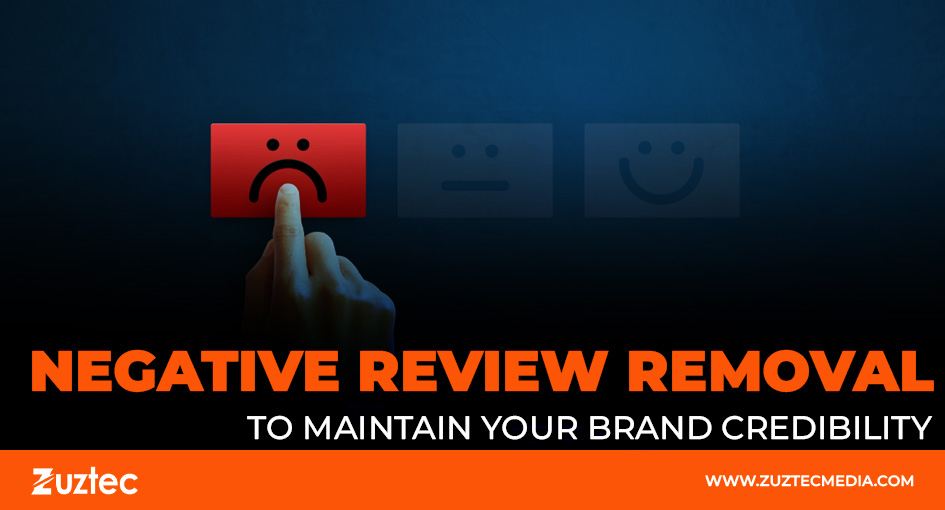
Negative Review Removal To Maintain Your Brand Credibility
Online reviews have become a powerful part of business visibility and reputation. Whether a customer is buying a new product or choosing a local service, they often start by reading reviews. While good feedback can boost a business’s reputation and sales, bad reviews can seriously hurt its image. Unfortunately, not all negative reviews are fair, accurate, or from real customers. That’s where negative review removal comes in—a growing concern for brands that value their public image and customer trust.
The internet gives anyone the power to post a review, and sometimes people misuse that freedom. False claims, spam content, or misleading complaints can end up on your business profile and drive potential customers away. Even when reviews are genuine but harsh, businesses often want to explore options to remove or resolve them. Ignoring such reviews can lead to a long-term dent in credibility and revenue.
Removing negative reviews is not about hiding feedback or avoiding accountability. It’s about protecting your brand from content that doesn’t meet platform guidelines or that misrepresents your service. The process involves knowing the rules of review platforms, identifying which reviews violate them, and following a structured approach to reporting or responding. Many businesses also use legal routes when reviews become defamatory.
Negative Review Removal Protects Your Online Reputation
Every review that shows up on your business profile can impact potential buyers. Studies show that even a single negative review can reduce the likelihood of a customer choosing your service. That makes negative comment removal an essential practice for maintaining a professional image, especially in competitive markets. Businesses that care about reputation know the value of managing their reviews strategically, not just passively accepting what’s posted online.
Most platforms, such as Google, Yelp, Facebook, and TripAdvisor, have clear content policies. These rules outline what kind of reviews are allowed, including guidelines against fake, abusive, or irrelevant comments. The key is to act quickly, gather supporting evidence, and follow the process carefully. A successful removal not only restores your rating but also sends a message that your business is actively maintaining its integrity.
Sometimes, removal isn’t possible, and in those cases, responding professionally is the next best step. A clear, respectful reply to a complaint shows your commitment to improvement. Even if the review remains, your response may influence how future customers view the situation.
Identifying Which Reviews Are Removable And Which Are Not
Platforms prioritize transparency and customer freedom of expression. Still, many reviews cross the line into policy violations, and that’s where removal becomes justified. Look for comments that include hate speech, promotional spam, personal attacks, or false information. These are often eligible for deletion under most review site rules.
To begin the removal process, document the review and collect any proof that supports your claim. This could include customer records, timestamps, or screenshots. Then, use the review platform’s dispute tool to file a formal request. Google, for example, lets businesses flag reviews directly from their Business Profile. Yelp has a similar flagging system with detailed explanations. While decisions may take time, valid reports often result in removals if the case is strong.
Many businesses choose to work with reputation management agencies that specialize in negative review removal. These professionals understand platform algorithms, escalation methods, and legal options. Their experience can improve success rates, especially when multiple reviews are at stake or when false reviews cause measurable harm.
Why Proactive Review Monitoring Matters
It is easier when you monitor feedback regularly. If you check your reviews weekly, you can catch harmful content before it spreads. Timely action limits visibility and prevents negative comments from shaping broader opinion. Businesses with no system in place may find themselves surprised by viral criticism or outdated complaints that remain online for months.
Review monitoring tools like Google Alerts, ReviewTrackers, or Yext can simplify this task. These platforms gather review data from multiple sources and send notifications for new activity. With such systems, businesses can react fast, whether by requesting removal or replying to the customer directly. In some cases, a quick, thoughtful response can turn a bad experience into a resolved one, eliminating the need for removal.
At the same time, monitoring helps you identify patterns. If multiple reviews mention slow service or poor packaging, that signals a business issue worth fixing. Negative reviews, while frustrating, can highlight areas for growth. The goal is not to eliminate all criticism but to manage it responsibly and remove the content that’s truly harmful or false.
However, negative review removal is a valuable part of protecting your brand online. In a world where consumers depend on digital feedback, businesses can’t afford to let misleading or damaging content remain unchallenged. Knowing how to identify removable reviews, acting fast, and using platform tools wisely helps maintain your reputation. With the right strategy, you can protect your image, engage customers effectively, and ensure that your brand is judged fairly. Removing harmful reviews is not about hiding flaws—it’s about giving your business the chance to be seen in the right light.

